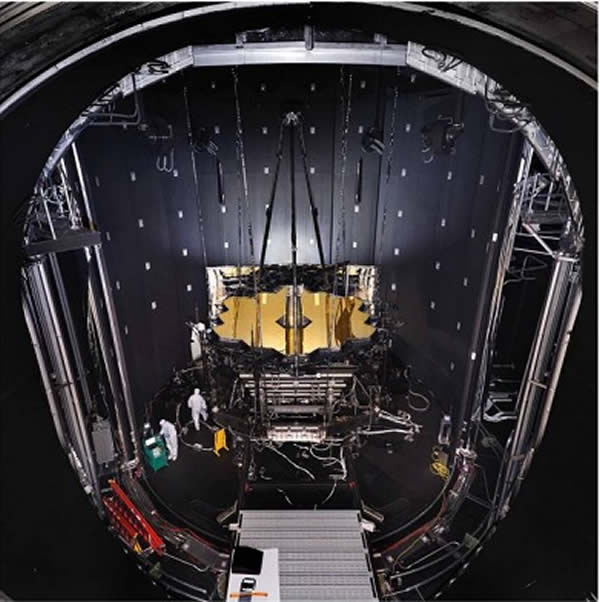
American Laboratory - October 2017
“Hammock” Isolates Space Telescope From Vibrations
The 40-ton door of NASA’s Johnson Space Center’s historic Chamber A was sealed shut in July, signaling the beginning of about 100 days of cryogenic testing for NASA’s James Webb Space Telescope (JWST) in Houston, TX. This began the process to transform the chamber’s interior to match the airless, frigid environment of space. It took approximately 10 days to pull the air from the chamber, and then about a month to lower the temperatures of the Webb telescope and its scientific instruments to the levels required for testing.
In preparation for the telescope’s cryogenic testing, engineers suspended it from the ceiling of the center’s Chamber A. This “hammock” (six support rods attached to Minus K Technology’s Negative-Stiffness vibration isolators) is intended to isolate the telescope from the vibrations that could be produced by the chamber once the door closes and testing begins, as well as from disturbances that might occur outside the chamber. The telescope needs an arrangement that holds it and its test equipment—an interferometer, autocollimating flat mirrors, and a system of photogrammetry ‘precision surveying’ cameras already used for tests with a surrogate ‘pathfinder’ telescope—in precise relative alignment inside the chamber while isolated from any sources of vibration, such as the flow of nitrogen and helium inside the shroud plumbing and the rhythmic pulsing of vacuum pumps. With the telescope suspended, engineers conducted a “push test,” where they gave it a slight nudge and observed how it reacted to ensure the suspension system was functioning the best it could.
In the photo below, the Webb telescope is floating; it is suspended only a few inches from the rails on the bottom of the chamber, which were used to roll the telescope into place.

NASA's James Webb Space Telescope (JWST) is suspended from Minus K vibration isolators on top of Chamber A at NASA's Johnson Space Center in Houston. (Photo: NASA/Chris Gunn)